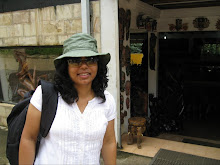If someone told you that life is a series of memories strung together, would you agree?
You definitely would if you looked back at the instances when you have deeply wished to
yourself: ‘if only I could have captured this moment!’
Photography is an art of composing images built of a mass of light. A recipe for a good
photograph not only includes a good camera, but also a sound technical knowledge of
the equipment, a detailed understanding of the object in focus, and the ability to judge
the light, both natural or studio, to which the object is exposed to. An experienced
photographer first visualizes the image and then captures it as per the picture in his mind.
There are different forms of photography – nature, fashion, forensic studies, and so on.
Yet, no matter how diverse one type is from another, they have one thing in common: the
desire to capture the unique and the brilliant.
Wildlife photography is one of the most challenging forms of photography – a form that
pushes its pursuer to untold extremes to get the ‘perfect shot’. The result includes times
when we have look at an image and gazed at it in amazement, wondering how such a
beautiful sight could ever be captured in a photograph.
Imagine the picture of a tiger meandering through a low maze of dry grass at a sunset or
of a lazy python basking in the sun on a fallen branch. An image of such intensity is not
work of chance, but of a passionate person with patience, who knows exactly what he/she
wanted.
To capture the wild, one would need sound technical skills, like the ability to judge the
light and exposure correctly and good field craft skills. For example, some animals could
be difficult to approach or the condition could be such that the slightest hint of intrusion
could ruin the desired image. In such an instance, the photographer will have to conceal
himself in a way that the animal doesn’t detect human presence.
There are no set rules, which state that to capture a wildlife photograph you need a high-
end camera. In many cases, even basic equipment can serve the purpose. But in certain
instances, one would require specialist equipment, such as macro lenses for insects,
long focal length lenses for birds, and underwater cameras for marine life. Digital and
automated cameras have proved to be a boon to the photographers. Now all it takes is the
need to be at the right place at the right time.
Subscribe to:
Post Comments (Atom)

No comments:
Post a Comment